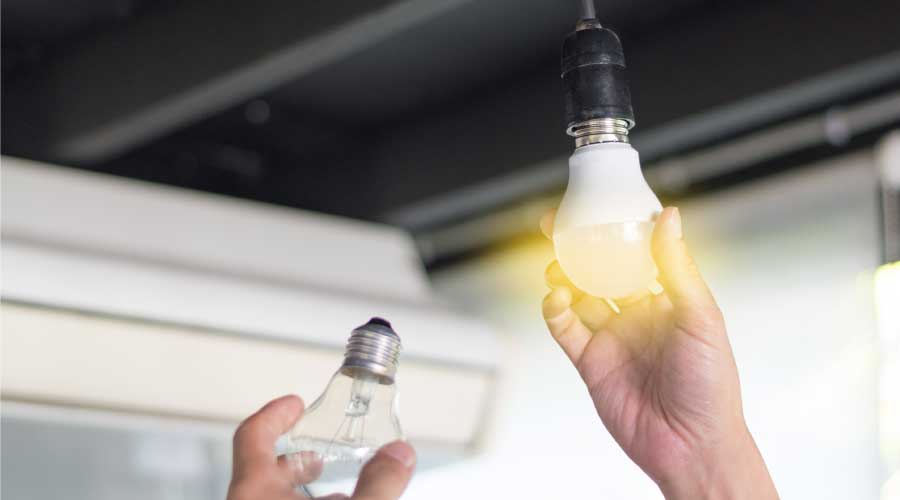Facility Managers Have Reasons to Consider Recycling Spent Fluorescent Lamps
Twenty-first century facility managers and 19th-century hat-makers may have something in common. In the 1800s, hat manufacturers used mercury to make felt hats. The workers, inhaling the fumes, often suffered from mercury poisoning. Remember the Mad Hatter from Alice in Wonderland?
Mercury is now seen as a significant environmental threat. And facility managers have a role in reducing that threat. The reason is simple, says Steve McGuire, environmental marketing manager with Philips Lighting: "All fluorescent and HID lamp products contain mercury."
If the lamps are simply thrown away and end up breaking, the mercury becomes airborne and can harm the environment, says Jennifer Dolin, manager of sustainability and environmental affairs with Osram Sylvania.
Airborne mercury often contaminates waterways, where it ends up in fish that live in them, says Ray Graczyk, president of NLR, a waste-recycling firm. When mercury-contaminated fish is eaten in large enough quantities, it can affect humans' nervous system, particularly those of young and unborn children.
The amount of mercury in a single lamp is small. According to the Interstate Mercury Education and Reduction Clearinghouse (IMERC), about 60 percent of lamps sold in the United States in 2004 contained no more than 10 milligrams of mercury. However, add up the estimated number of lamps sold that year, and the total amount of mercury tops 20,000 pounds, IMERC reports. IMERC is a division of the Northeast Waste Management Officials' Association.
What's more, about 600 million lamps each year head into the garbage from the commercial sector, says Graczyk. Even if each of the lamps contains just five milligrams of mercury, the total comes to about 13,300 pounds.
Would it be better, environmentally speaking, to use incandescent bulbs? The answer is no. The emissions from coal-fired power plants contain significant amounts of mercury. Because fluorescent lamps are more efficient and last longer than incandescent bulbs, the net amount of mercury released into the environment is lower with fluorescent lamps, according to the National Electrical Manufacturers Association (NEMA).
Moreover, the mercury in the lamps can easily be controlled through proper recycling, says Mark Tibbetts, NEMA's director of recycling initiatives. In fact, the recycled mercury often is re-used in new lighting products, says Joseph Howley, manager of environmental marketing with General Electric.
However, the rate of lamp recycling for commercial buildings currently stands at about 25 percent, says Paul Abernathy, executive director of the Association of Lighting and Mercury Recyclers. That means lamp recycling represents a significant opportunity for facility managers.
Legal Ramifications
Facility managers should be aware of federal and state regulations covering used lamps. The U.S. Environmental Protection Agency puts standard fluorescent lamps in a category of hazardous waste known as universal waste. Universal waste regulations impose requirements for disposal, storage, transportation, labeling and other matters related to used lamps. Low-mercury lamps that pass the EPA toxicity test known as the TCLP are exempt from universal waste rules.
All states have either adopted the federal universal waste rule or have implemented even more stringent regulations for used lamps, Tibbetts says.
Some small businesses are exempt from universal waste rules, but rules vary across the country, says Mark Kohorst, senior manager of environment, health and safety with NEMA. Some states prohibit any mercury from entering the waste stream, which means that even small businesses must dispose of lamps in accordance with universal waste rules.
Moreover, a facility's obligations under the rules can depend on other wastes it generates, Abernathy says. Other hazardous waste from a facility, together with the lamps, may be enough to move the facility out of the category of "conditionally exempt small quantity generator," and the facility manager would be responsible for properly recycling the lamps and other waste.
The penalties for ignoring waste disposal rules can quickly add up, Abernathy says. Besides fines, penalties include supplemental environmental projects that the company must complete, such as participating in a neighborhood clean-up or restoring a waterway.
Related Topics:












